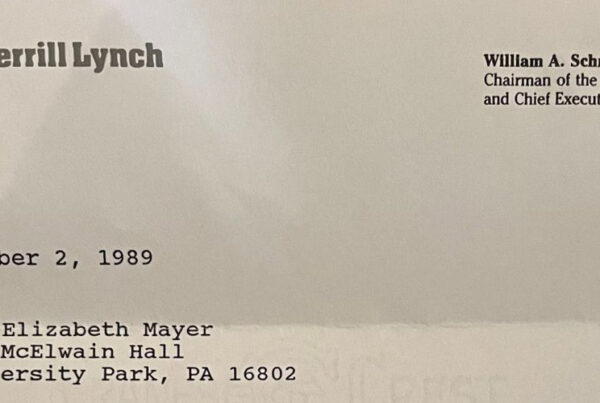
This blog post is about Anaphora, a Figure of Repetition. It is part of a series on repetition. I share them as the English language has hundreds of literary devices to help you (dramatically) improve the effectiveness and impact of your various communications.
Repetition used well, strengthens your written and spoken narrative with emphasis and emotion. Repetition is by far, one of the most powerful of all figures of speech. Why? Because as human beings, we are programmed to recognize patterns and to pay attention to them.
While I include background information, Greek word derivation, and pronunciation, what is most important is the application of each figure of speech in your written, spoken, and social media communication.
I tell my consulting customers, workshop participants, coaching clients, and students (I’m an adjunct professor at The Robert H. Smith School of Business at the University of Maryland), the same thing:
“You never have to remember the actual Greek word for the figure of speech. Just remember the concept and application.”
Emphasis & Impact Figures of Speech include Anadiplosis, Anaphora, Asyndeton, Diacope, Epanalepsis, Epiphora, and Polysyndeton.
Amplification Figures of Speech include Auxesis and Epizeuxis,
Figures of Sound include Onomatopoeia.
Other Figures of Speech include Procatalepsis and Portmanteau.
There are three major sections:
- Figure of Speech. Includes a little background, usage, definition, pronunciation, other related figures of speech, and etymology.
- Usage Guidelines. Follow these guidelines to ensure maximum impact.
- Examples of Anaphora. Find examples from speeches, presentations, presidential addresses, poems, music, and more
1) ANAPHORA – REPETITION FIGURE OF SPEECH
Repetition is by far, one of the most, most powerful used (see, I just used “most” twice without any words in between, which is Epizeuxis). One of my favorite literary devices from the Repetition category is Anaphora. It is easy to use and so very powerful.
Anaphora is thought to be one of the oldest literary devices as it is found throughout the Bible. Apart from the function of giving prominence to certain ideas, the use of Anaphora in literature adds rhythm, thus making it more pleasurable to read, and easier to remember. As a literary device, Anaphora serves the purpose of giving artistic effect to passages of prose and poetry. As a rhetorical device, Anaphora is used to appeal to the emotions of the audience, to persuade, inspire, motivate, and encourage them.
Since Anaphora is in the beginning of a clause or sentence, one of its strengths is that it clearly links two or more ideas together through the repetition. This repetition makes the word or phrase (much) more memorable for your audiences.
The key — is — deliberate repetition.
| Definition | Anaphora is a word or phrase repeated at the beginning of a successive phrase, clause, or sentence, two or more times |
| Pronunciation | ah – NAF – oh – rah |
| Also Known as | Epanaphora, Iteratio, Relatio, and Repetitio |
| Related to | Epiphora, Simploce |
| Etymology | Comes from the Greek word, ἀναφορά, which means “to carry back” or “to bring back” |
2) USAGE GUIDELINES
Here is my own definition of Repetition.
Repetition is a literary device where a word or phrase is repeated two or more times to emphasize the point being made and/or emphasize the emotional feeling associated with the point being made. With more than 30 forms of repetition, it is more commonly thought of as a category rather than thought of as a single figure of speech.
Here are some guidelines for you to ensure Anaphora achieves your communication goals:
| Use Sparingly | Too much of one type of repetition will likely reduce its effectiveness and may cause your audience to miss your emphasis entirely as there are too many instances of your repetition. As such use Anaphora sparingly and for that matter, all of your figures of speech. In your typical three-minute story, which is about 450 words, use Anaphora no more than three or four times. |
| Choose a Simple Word or Phrase | If you were to analyze narratives where Anaphora is used, you would find the authors use simple words and simple phrases. Ensure your audience is able to readily remember your ideas. Simple always wins the day. |
| Repeat 3 Times | Since humans look for and respond to patterns, I recommend using the pattern for Anaphora three times (note, sometimes two is also quite powerful). This ensures your readers and listeners know with certainty you are using the repetition to make a point or to increase the emotional feeling of your narrative. See examples below. |
| Use Your Orchestra |
In my training and teaching, I share specifics on how to use one’s voice to add (dramatic) impact to your spoken communication. Think of yourself as an orchestra with three main instruments: i) your Words; ii) your Body (Language); and iii) your Voice. Using your orchestra effectively, is what separates a good speaker from a great speaker. A good trainer from a great trainer. A good leader from a great leader. |
3) EXAMPLES OF ANAPHORA
Look at the examples below. See how Anaphora is used to dramatically increase the effectiveness and impact of your words. Then experiment, mixing and combining other figures of speech in your written, spoken, and social media communication.
Example 1: “Freedom’s Forge,” Book Launch Event, Author Arthur Herman
| Without Notation | Now, what I want to do here tonight is to tell you a story. And this is a story that usually is told backwards. If you go to the textbooks, if you go to the movies, if you go to the usual discussions… |
| With Notation |
Now, what I want to do here tonight is to tell you a story. And this is a story that usually is told backwards. { If you go to the } textbooks, { if you go to the } movies, { if you go to the } usual discussions…
Note 1: tell you { a story }. And this is { a story } – This is an example of Anadiplosis |
Example 2: Rick Blane in the Movie, Casablanca
| Without Notation | Of all the gin joints in all the towns in all the world, she walks into mine |
| With Notation |
{ Of all the } gin joints { in all the } towns { in all the } world, she walks into mine |
Example 3: President John F. Kennedy, Inaugural Address, January 1961
| Without Notation | Let both sides explore what problems unite us instead of belaboring those problems which divide us.
Let both sides, for the first time, formulate serious and precise proposals for the inspection and control of arms, and bring the absolute power to destroy other nations under the absolute control of all nations. Let both sides seek to invoke the wonders of science instead of its terrors. Together let us explore the stars, conquer the deserts, eradicate disease, tap the ocean depths, and encourage the arts and commerce. Let both sides unite to heed, in all corners of the earth, the command of Isaiah–to ‘undo the heavy burdens, and to let the oppressed go free.’ |
| With Notation |
{ Let both sides } explore what problems unite us instead of belaboring those problems which divide us.
{ Let both sides }, for the first time, formulate serious and precise proposals for the inspection and control of arms, and bring the absolute power to destroy other nations under the absolute control of all nations. { Let both sides } seek to invoke the wonders of science instead of its terrors. Together let us explore the stars, conquer the deserts, eradicate disease, tap the ocean depths, and encourage the arts and commerce. { Let both sides } unite to heed, in all corners of the earth, the command of Isaiah–to ‘undo the heavy burdens, and to let the oppressed go free.’ |
Example 4: Admiral William McRaven Speech to the West Point Class of 2015
| Without Notation | Not the Army of the Hudson, not the Army of the history books, not the Army portrayed in the countless murals across campus… |
| With Notation |
{ Not the Army } of the Hudson, { not the Army } of the history books, { not the Army } portrayed in the countless murals across campus… |
Example 5: Simon Sinek
| Without Notation | Working hard for something we don’t care about is called stress. Working hard for something we love is called passion. |
| With Notation |
{ Working hard for something we } don’t care about is called stress. { Working hard for something we } love is called passion. |
References: I use a combination of my experience, my personal library of books and journals, sources from the Internet, and my 710-plus page Story Elements Resource Guide. My favorite sources include, in alphabetical order: American Rhetoric, Encyclopedia Britannica, LitCharts, Literary Devices, Merriam-Webster Dictionary, Oxford English Dictionary, Silva Rhetoricae, and ThoughtCo. My favorite books include: A Handbook of Rhetorical Devices by Robert A. Harris; Elements of Eloquence by Mark Forsyth; and A Handlist of Rhetorical Terms, 2nd Edition by Richard A. Lanham.
Updated March 2019
Photography Source: Message Cloud/Word Cloud © Copyright 2019, The Chief Storyteller®, LLC. All Rights Reserved.
#chiefstoryteller #communication #figuresofspeech #language #rhetoric



